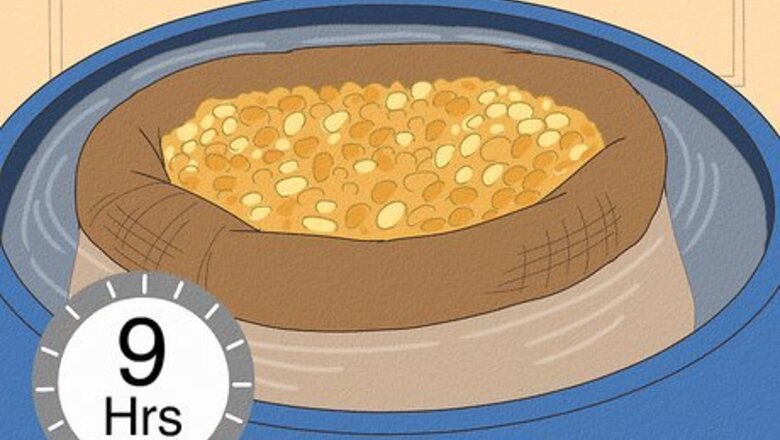
views
- Sprout and dehydrate corn kernels to prepare a corn malt for your whiskey base.
- Ferment your malt with champagne yeast for 7-10 days, then strain it into a still.
- Distill your whiskey and collect it with a condensation tube, discarding the first and last batches, which aren’t safe for consumption.
- Dilute your whiskey with water, or mix it into a cocktail with fruit infusions and syrups.
Preparing Corn Malt
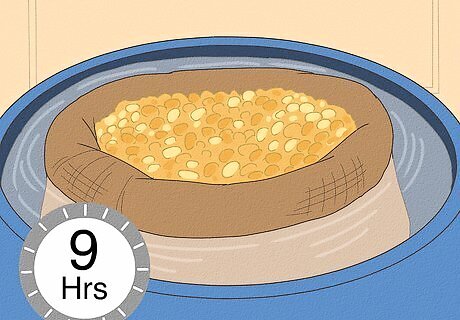
Steep corn kernels repeatedly in warm water. Place 10 lbs. (4.5 kg) of untreated kernel corn in a burlap sack and place that burlap sack in a larger bucket or container. Then, saturate the burlap sack with warm water. Make sure the corn is completely and evenly soaked. Let the kernels steep for 9 hours, then remove them from the water and place them in a well-ventilated area to dry for 3 hours. Repeat this steeping/resting process 3 more times. Why sprout the corn for whiskey? In short, sprouting eliminates the need for added sugar in the mash, allowing you to get a more authentic whiskey. Also called "malting," sprouting causes enzymes in the corn to convert starches to sugar. Those sugars then become the building blocks of the alcohol in the whiskey.
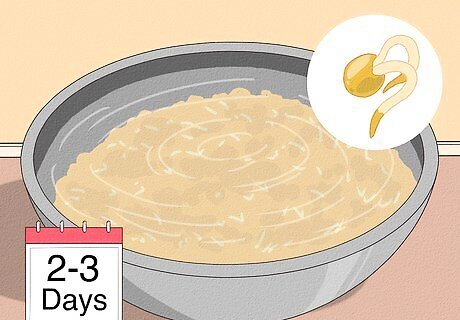
Let the kernel corn sprout in an aluminum tray for 2-3 days. Pour the kernels into aluminum trays, leaving about an inch of room at the top. Keep the trays in a warm, dark environment, such as a well-insulated garage or basement. Make sure the corn remains damp for about a week and a half. During the sprouting phase, keep the temperature of the corn at about 77 °F (25 °C). Rinse the corn with cool water about every 12 hours during this process to keep it damp and maintain its temperature.
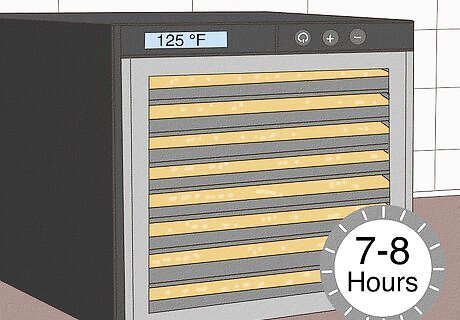
Dehydrate and malt the corn in an oven for 7-8 hours. Once the corn sprouts are a couple inches in length, you can use a dehydrator or an oven set to about 125 °F (52 °C) for several hours to stop the corn’s germinating. Then, increase the temperature to 160 °F (71 °C) for another hour to complete the dehydration. Finally cook the corn at 185 °F (85 °C) for four hours. At this stage, your corn should be shriveled and dry.
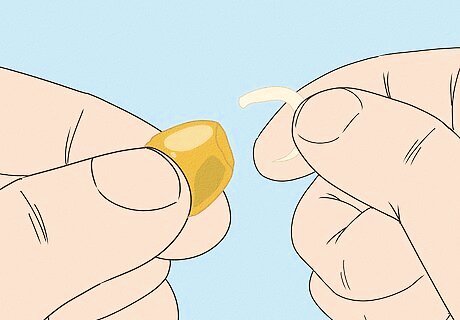
Remove the sprouted ends from the corn. After the corn is malted in the oven, remove and discard as many of the sprouted roots as possible by hand. Reserve the corn in an air-tight container until you’re ready to ferment. To remove the stems, you can also place the malted corn in a tied pillowcase, then run the pillow case through the dryer on the lowest-possible heat. After, place the mixture in a clean tray and separate the kernels from the stems.

Crush the kernels. Using a rolling pin with a solid end, a wooden muddler, or any other large implement, crush the kernels on a clean, flat surface. Stop when all the kernels have been broken apart. If you want to, you can also use a grist mill to crack apart the corn. You can only do this, however, when your corn is fully dried; wet corn won't go through the grist mill properly.
Fermenting
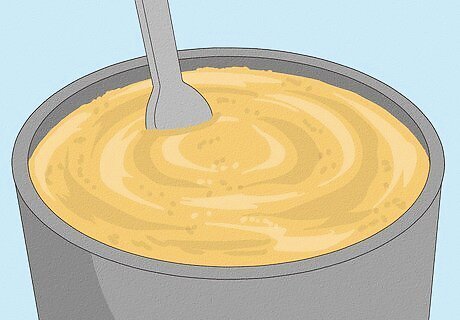
Combine the corn with 5 gallons (19 l) of boiling water and 2 pounds (32 oz) of malted barley. In the fermenter, allow the mash to cool down to 152 °F (67 °C), stirring every 5 minutes. Then add the malted barley and stir for one minute. Finally, let the mixture rest for about 1.5 hours. You want the mash to cool down but still be considerably warm for the yeast to do its job. You're now ready to ferment. At this point, the corn will take on a slightly gelatinous consistency, due to the starches releasing from the kernels. During this phase of the whiskey making, it's especially important to keep all the instruments and containers you'll be using clean. A small contamination could ruin the entire batch of whiskey. Be sure to sterilize any thermometers, container lids, and airlocks you might be using, as well as sanitize your hands beforehand.

Add 1 cup (237 g) of yeast. Once the mixture is cooled to 70 °F (21 °C), add the champagne yeast to the top of the mash and close the lid on the fermenter. For about four to five minutes, carefully pitch the fermenter at an angle, slowly moving back and forth, to agitate the yeast.

Vent your fermenter with an airlock. Attach your airlock to your fermenter’s valve, and fill it halfway with water to create a seal. An airlock is an essential tool for fermentation. It allows the CO2 to escape but no air to get into the mash. Air getting into mash would minimize the effect that yeast otherwise has. You can make an airlock yourself quite easily, but buying one is cheap. It's possible to get one for under a couple of bucks.
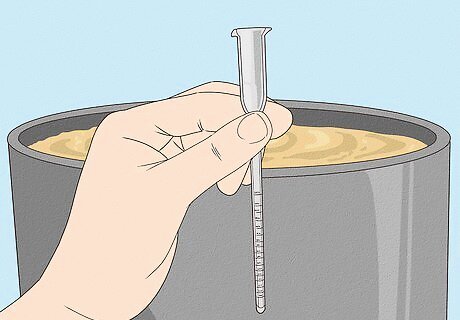
Allow the mash to ferment for 7-10 days at room temperature. The fermentation process can vary by a few days depending on your corn and yeast varieties and the temperature of the room. During this process, yeast converts the sugars in the corn to alcohol. Use a hydrometer to tell when the primary fermentation is complete. If the reading on the hydrometer is the same for two to three consecutive days, you're ready to begin distillation.

Strain or siphon the fermented mash into a still. Check your mash after 7-10 days. If the mixture is no longer producing bubbles, it’s ready to strain. Strain the mixture through a pillowcase into the still. Try to keep as much of the solids as possible away from the still when transferring the mash. The resulting liquid is called a “wash,” and will be distilled into whiskey! If your mixture is still producing bubbles, let it sit for another 2-3 days in order to complete fermentation. At this point, the wash has about 15% alcohol by volume. Distilling the wash will increase the alcohol content greatly. For best results, get a pot still. If you're especially handy and have the time, you can build a still yourself.
Distilling
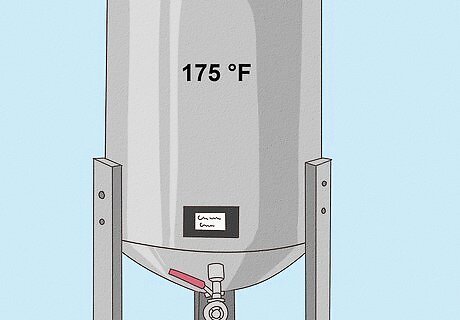
Slowly heat the wash in the still to 175 °F (79 °C). With whiskeys, you don't want to rush the distillation; heat up the still on medium-heat stove or burner plate over the course of 30 minutes to an hour until it just begins to boil. Heating the wash too quickly will result in burnt wash and off flavors.. Why this temperature? Your wash contains methanol and ethanol, which can be lethal to consume. Luckily, these compounds boil and evaporate at about 174 °F (79 °C), so heating the mixture to above that point will boil them off. But keep the mixture just above that temperature and not much higher, to avoid boiling off the liquid.
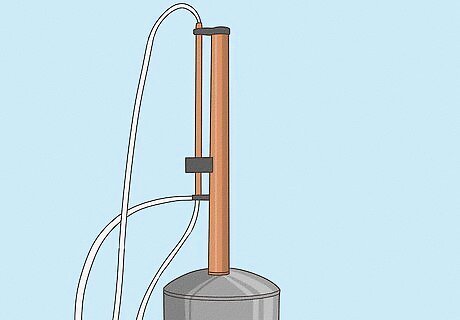
Turn on the condensing tube after the wash hits 120º - 140º F (50º - 60º C). At this temperature, the condensing tube takes the evaporated alcohol and cools it quickly, turning it back into liquid form. Slowly, the condensing tube should begin to spit out liquid.
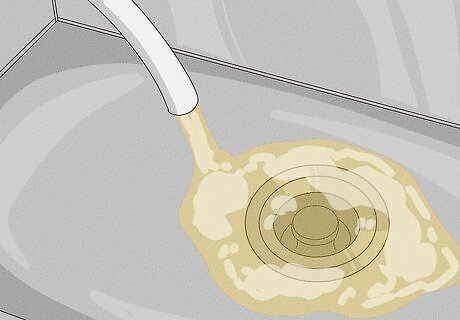
Throw out the heads. The heads are a mixture of volatile compounds that evaporate from the wash and should not be consumed. They include methanol, which is lethal in large quantities. Luckily, the heads come out of the wash first. For a 5 gallon (18.9 L) wash, prepare to throw out the first 50–100 milliliters (1.7–3.4 fl oz) of condensed liquid just to be safe.
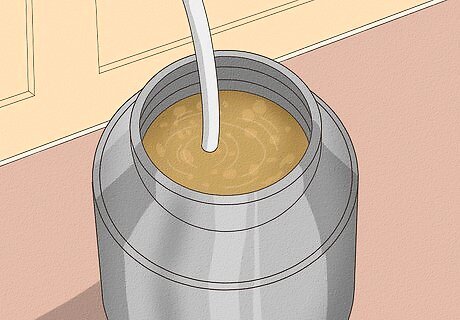
Collect the body in 500 milliliters (16.9 fl oz) batches. After the heads are collected and dumped, you're ready to collect the good stuff. When the thermometer on the condensing tube hits 175º - 185º F (80º - 85º C), you're starting to collect the valuable prize — moonshine. This is also referred to as the "body" of the distillate. Throw out the tails. Continue collecting the body until the thermometer on the condensing tube begins reading 205º F (96º C). At this point, the evaporated liquids you start distilling are fusel oils, which should be thrown away. Turn off the heat source and let the pot still cool down completely. Allow your distilled moonshine to cool off as well.
Diluting and Aging the Whiskey
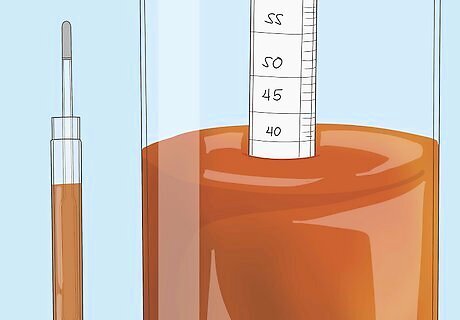
Use a proof and tralle hydrometer to test the ABV (alcohol by volume) of your moonshine. At this point, you have moonshine — high ABV whiskey. In order to get it resembling something like you'd find at the store, you need to age the whiskey and dilute it down to 40% - 50% ABV. You want to know how strong your moonshine is, both for aging and as an indication of how well your distillation went. Be sure not to confuse the proof and tralle readings on the hydrometer. Your proof will always be two times the amount of the tralle.
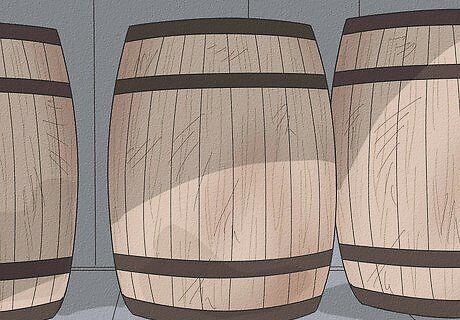
Age the whiskey in a barrel. If you do decide to age your whiskey, you want it to go into the barrel at around 58% to 70% ABV. Aging will make the whiskey smoother and give it its distinctive taste. Whiskey will only age in barrels. When it is bottled, whiskey will stop aging. Age and store the whiskey anywhere from a few weeks to several years, based on your preference. Longer aging produces richer flavor. Whiskey is generally aged in oak barrels. The barrels can be carefully charred or toasted first, or can be sourced from another distiller that's kept another spirit in the barrel for added flavor. If you want to add oak flavor to your moonshine but don't want to have to spring for a barrel, you can also add toasted oak chips to your whiskey. Toast your oak chips over low heat (200º F) in the oven for an hour, until they are aromatic but not yet charred. Remove and cool. Transfer to a sterilized glass bottle and steep for 5 - 15 days or longer, depending on your tastes. Strain the whiskey through cheesecloth or a clean pillowcase to catch all the wood chips.

Dilute the whiskey. After your whiskey is aged, you'll want to dilute it with water before you drink it and bottle it. At this point, the whiskey is still probably 60% - 80% ABV, which would make for a fiery, uncomfortable drinking experience. It should be diluted to around 40% or 45% ABV for a much more pleasant drinking experience. Pour water into your whiskey, and experiment with ratios to find the perfect mixture for your taste.
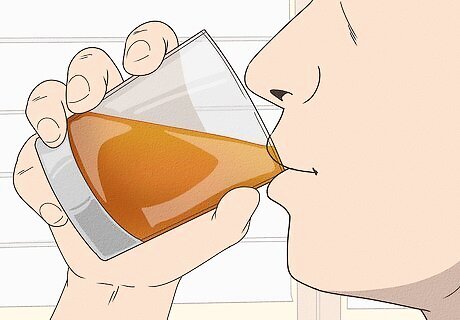
Bottle and enjoy! Bottle your whiskey, along with a note on when you bottled it. Store the whiskey out of direct light, a when you’re ready to drink your whiskey, you add things like syrups or fruit infusions for a tasty cocktail. Or, drink it straight to really appreciate your hard work. Always drink responsibly. Congrats! What you’ve just made is actually considered bourbon, a variety of whiskey made with at least 51% corn mash. Or at least, it’ll be bourbon so long as you age it in a charred oak barrel and bottle it at 40% ABV, and don’t add anything to it during fermenting and distilling. There are plenty of other varieties of whiskey, like scotch (a barley malt distilled in Scotland), rye whiskey, Irish whiskey (a grain malt originated by Irish monks), and even Japanese whiskey. Experiment with the grains you use for your malt and the barrels you use to age your whiskey in order to achieve different flavors and varieties.




















Comments
0 comment